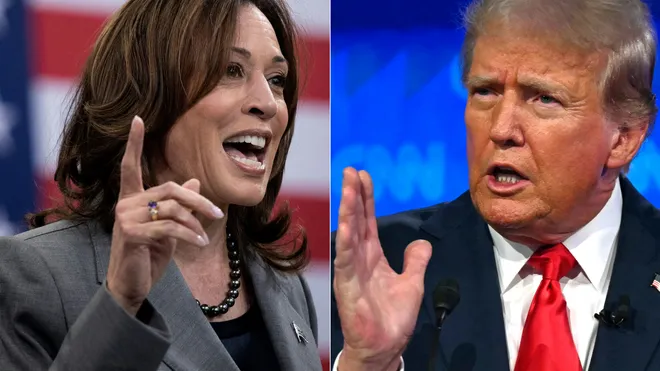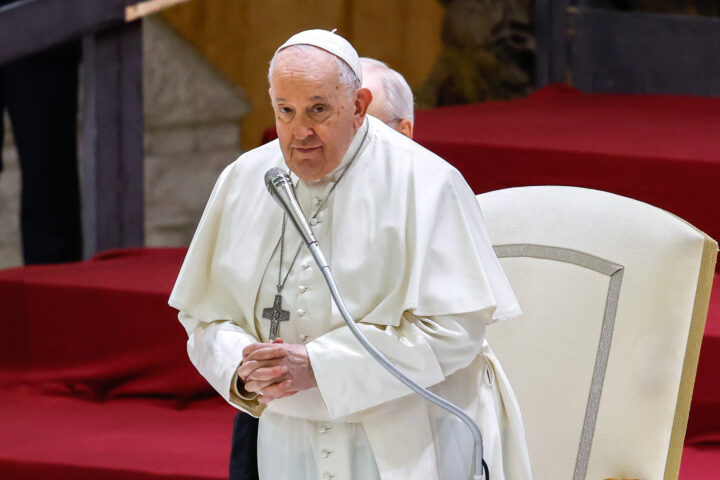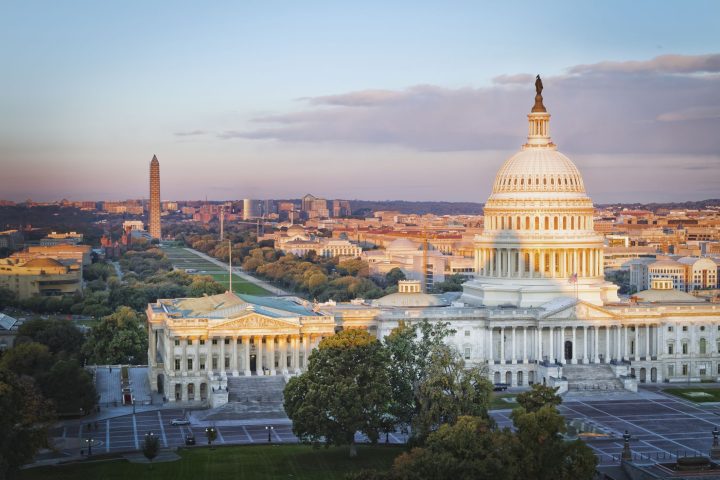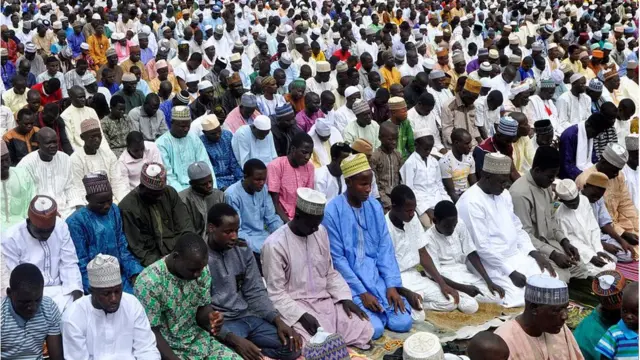As the United States’ November 2024 presidential election draws closer, the intensity of the race has reached a fever pitch with candidates battling to sway voters, especially in swing states, to their side.
Vice President Kamala Harris, who became the Democratic Party’s presidential nominee after President Joe Biden bowed out in July following a disastrous outcome during CNN debate, is vying to make history as the first female president after former Secretary of State, Hilary Clinton failed to break the glass ceiling in 2016 despite winning the popular votes. On the other side is former President Donald Trump, hell-bent on reclaiming the White House after his 2020 defeat to Joe Biden. The intensity of this race is most evident in a handful of crucial battlegrounds, the swing states, which hold the power to either hand a candidate the keys to the White House or send them home empty-handed.
Join our WhatsApp ChannelThe prize? 93 crucial electoral college votes spread across seven swing states. These votes are enough to tip the balance of the entire election, making them the battlegrounds where Harris and Trump are waging an all-out war for victory.
To win the US presidency, a candidate needs at least 270 electoral votes. The Electoral College, with its 538 total votes, assigns each state a specific number of electors based on its population size. Whoever wins the majority of a state’s popular vote receives its electoral votes (except in the states of Maine and Nebraska, which use proportional allocation).
Just like in other U.S. elections, the 2024 votes are divided into three major categories: solidly Democratic blue states, reliably Republican red states, and fiercely competitive swing states.
States like California (54 electoral votes), New York (28 electoral votes), and Illinois (19 electoral votes) are reliably Democratic. These states give Kamala Harris a solid base of around 200 electoral votes—a strong foundation, but not enough to secure victory.
Red states, including Texas (40 electoral votes), Florida (30 electoral votes), and Alabama (9 electoral votes), are expected to stand behind Trump. These states contribute around 180 electoral votes to Trump’s quest—a significant number, but still short of the at least 270 needed to win.
READ ALSO: US Election: Trump Pushes Into Strongholds, Aiming For Black, Latino Votes
The real battlegrounds lie in seven swing states: Arizona (11 votes), Georgia (16 votes), Michigan (15 votes), Pennsylvania (19 votes), Wisconsin (10 votes), Nevada (6 votes), and North Carolina (16 votes). These seven states hold 93 electoral votes combined, which will ultimately decide who secures the presidency.
Vice President Kamala Harris seems to be in pole position to win the election, given that she is starting with an advantage of 31 votes—a lead that’s not always the case. Historically, the candidate who wins the majority of these battleground states almost always wins the election. In 2016, Donald Trump won several key swing states, such as Pennsylvania, Michigan, and Wisconsin, which helped propel him to the presidency. In 2020, Joe Biden flipped those same states, swinging the election in his favor.
With the 2024 race now deadlocked, Kamala Harris and Donald Trump are focusing their efforts on these crucial battlegrounds. The fight for each state’s electoral votes will determine whether Trump can mount a comeback or whether Harris can hold onto the blue wave that brought Biden to victory in 2020.
Where Harris and Trump Stand on Issues That Could Sway Votes
As Election Day draws closer, both presidential candidates are hammering on key issues to sway undecided voters in swing states.
Inflation: Harris has emphasised that her day-one priority in office would be to reduce food and housing costs for working families. Trump, on the other hand, has promised to “end inflation” and said deporting undocumented immigrants would ease pressure on housing costs, a central theme of his campaign.
Abortion: Harris is pushing for legislation to protect reproductive health rights and has repeatedly stressed that women should have autonomy over their bodies, advocating a federal law safeguarding these rights. Meanwhile, Trump has argued that abortion laws should be left to individual states, criticising federal regulation.
Immigration: Harris supports an earned pathway to citizenship and aims to revive a tough border compromise law to close loopholes in the asylum process and empower the president to control the border. Trump retains a hardline stance, calling for strong border enforcement as he implemented in the past and advocating limits on legal immigration, including refugee resettlement.
Guns: Harris pledges to prevent gun violence by advocating tighter laws, whereas Trump positions himself as a staunch defender of the Second Amendment and Americans’ right to bear arms.
Recent Polls Reflect a Nail-Biting Race
Polling data from the swing states highlights just how fiercely contested these states are in the final weeks of the campaign. Polling averages indicate that Harris and Trump are effectively tied in most key swing states. Notably, early voting has already begun, and nearly 25 million voters have cast their ballots, either in person or by mail, according to tracking data from the University of Florida’s Election Lab.
In national polling, Vice President Harris currently leads by 1.8 percent against former President Trump, according to FiveThirtyEight’s daily election poll tracker. A recent poll by the Silver Bulletin shows Harris leading in Wisconsin, Michigan, and Nevada, while Trump is ahead in North Carolina, Pennsylvania, Georgia, and Arizona—all with a slight margin of less than 2 points. Meanwhile, an Emerson College Polling survey (October 23-24) released Saturday finds the candidates tied at 49%, with the poll’s margin of error at 3 points.
However, it is important to note that all polls come with uncertainties and inbuilt errors—they’re only a snapshot of the current situation, not a prediction of the outcome on Election Day. That’s why both candidates are deploying some of America’s biggest heavyweights to campaign on their behalf, hoping to sway the undecided voters and shore up support in critical swing states.
Kamala Harris has enlisted the support of Democratic icons such as former President Barack Obama, Senator Bernie Sanders, and former President Bill Clinton, all of whom have taken to key battlegrounds to boost her bid to make history as the first female president.
On the Republican side, Donald Trump is drawing support from influential allies. Tesla CEO and the world’s richest man Elon Musk is giving out millions of Dollars to people gathering support for his petition to protect the second amendment which supports right to own guns without restriction. Blackstone CEO, Steve Schwarzman, independent presidential candidate, RFK Junior, and rapper Kanye West are among those rallying to energize Trump’s base and make his case to swing state voters.
These high-profile endorsements reflect the all-out efforts each campaign is making to capture every possible vote in the final push before Election Day. With only weeks left, all eyes are on the 93 electoral votes that will likely determine the next occupant of the White House. Kamala Harris and Donald Trump are throwing everything they have into the race and the world is watching to see which candidate would get America’s approval to govern them for the next four years after Joe Biden.















![Trump, Zelenskyy Discuss Peace Plans During Pope Francis’ Funeral In Rome [VIDEO]](https://www.primebusiness.africa/wp-content/uploads/2025/04/Trump-and-Zelenksy-meet-at-Pope-Francis-Burial-150x150.jpeg)



Follow Us